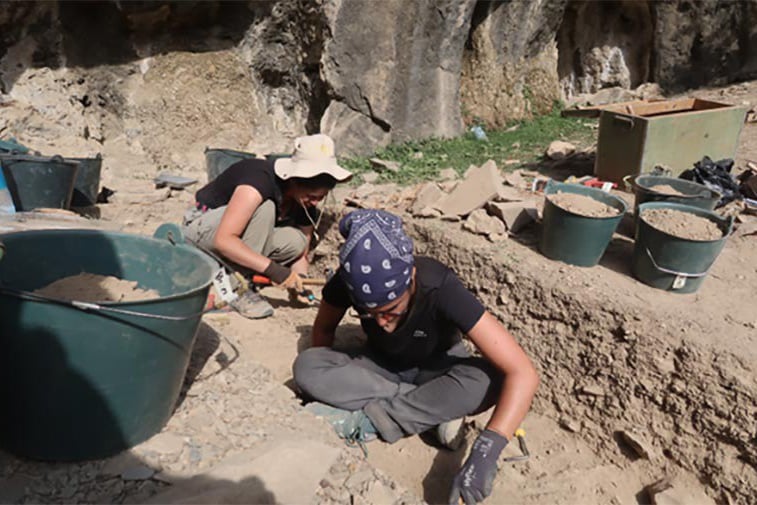
Archaeologists in Tajikistan have uncovered an ancient water pipeline system dating back about 1,500 years. The discovery was made at the Mugtepa settlement, a fortress site perched on a 65-meter (213-feet) hill once ruled by the leaders of Uratyube.
The settlement, as tall as a modern 20-story building, had long been neglected. For nearly three decades, the site received little attention from researchers. Construction activity in 2017 and 2018 damaged parts of the hill, leading many to believe its secrets had been lost.
University team revives excavations
That changed in the summer of 2025, when a team from Khujand State University launched new excavations. The work was led by Professor Nabijon Rakhimov of the Department of Archaeology, Ethnography, and Religious Studies, with support from the Kalai Mug Historical and Cultural Complex, under Mirzo Olimov.
Although the project had no state funding, it moved forward with contributions from students and specialists.
Between June 18 and July 18, the team studied three sections of the ancient aqueduct. They found that water was sourced from a spring at the base of a nearby hill and transported through ceramic pipes, known as kuburs, each measuring about 40 centimeters (16 inches).
The pipes were joined with waterproof alabaster mortar and laid in trenches 85 centimeters (33 inches) wide and 20 centimeters (8 inches) deep. Along the way, small pools called hauzes were uncovered, likely serving as water collection points. The system displayed consistent craftsmanship, suggesting it was produced in specialized workshops.
Artifacts trace a long history
Excavations also revealed layers of history beneath the site. Pottery, stone grain grinders, and spindle whorls dating from the 5th to 8th centuries point to a thriving agricultural and textile economy.
Deeper layers contained artifacts from earlier periods, including the 1st to 3rd centuries CE and as far back as the Achaemenid and Hellenistic eras, between the 6th and 1st centuries BCE. Among the finds were fragments of tall-stemmed goblets, cup-shaped vessels, and red-slip bowls.
Rakhimov emphasized the importance of preserving such sites, calling archaeological remains “material evidence of history” that risk disappearing without the proper care. The team plans to seek official backing from Tajikistan’s Agency for the Protection of Monuments to continue excavation and preservation at Mugtepa.
Other discoveries across Tajikistan
The Mugtepa discovery adds to a string of recent breakthroughs in Tajikistan. In 2023, architect Amindjonov Khomid and Professor Rakhim Nabiev uncovered a 7th-century sewer system in Istaravshan, along with a rare 6th-century jug made of concrete and coated in clay.
In May 2025, archaeologists from the National Museum of Tajikistan found a Kushan-era clay vessel near the village of Sarband. The pot carried a Bactrian inscription that read, “This water jug belongs to a woman named Sagkina,” offering a glimpse into ancient literacy and social life.
Finds push back the timeline of human presence
An earlier discovery in November 2024 at the Soyi Khavzak site in the Zeravshan Valley revealed artifacts dating back 150,000 years.
An international team led by Professor Yossi Zeidner of the Hebrew University uncovered stone tools, animal bones, and plant remains, evidence that the region once served as a migration corridor for early humans, including Homo sapiens and Neanderthals.
The preservation of organic material at the site has raised hopes of uncovering human remains, which could transform understanding of prehistoric life in Central Asia.


